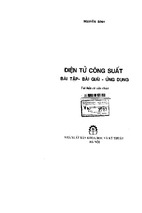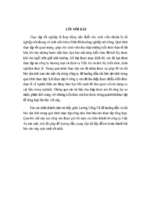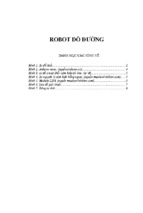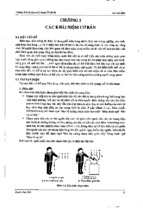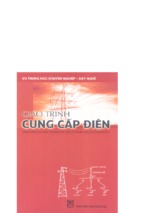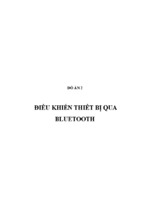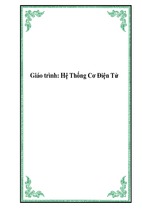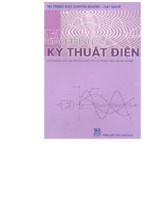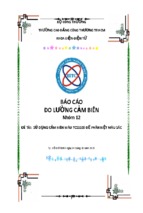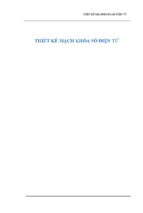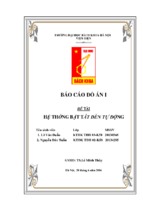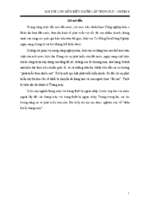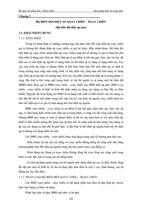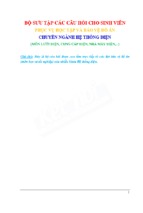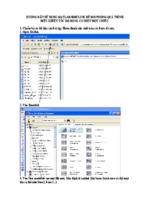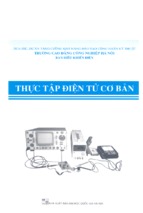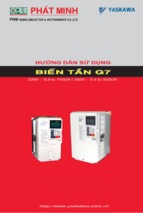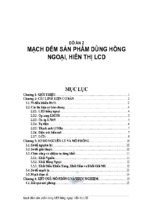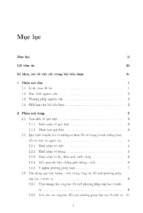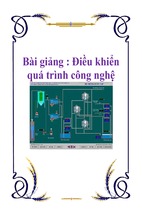I
I
F
I
Recognized as an
American National Standard (ANSI)
IEEE S M 519-1992
(Revision of IEEE SM 519-1981)
n
IEEE Recommended Practices and
Requirements for Harmonic Control
in Electrical Power Systems
IEEE Industry Applications Society/
Power Engineering Society
CO-sponsored by the
Static Power Converter Committee and the
Transmission and Distribution Committee
hblkhed by the InSMute of E l m e a l and Ehxtronics Engineers, Inc., 345East 47th Street, New York, NY loOQ USA.
April 12, 1993
Authorized licensed use limited to: UNIVERSIDADE FEDERAL DO RIO DE JANEIRO. Downloaded on June 8, 2009 at 06:27 from IEEE Xplore. Restrictions apply.
SH 15453
1-
IEEE
Recognized as an
American National Standard (ANSI)
Std 519-1992
(Revision of IEEE Std 519-1981)
IEEE Recommended Practices and
Requirements for Harmonic Control in
Electrical Power Systems
Sponsors
Transmission and Distribution Committee
of the
IEEE Power Engineering Society
and
Static Power Converter Committee
of the
IEEE Industry Applications Society
Approved June 18,1992
IEEE Standards Board
Approved January 4,1993
American National Standards Insitute
Abstract:This guide applies to all types of static power converters used in industrial and commercial power systems. The problems involved in the harmonic control and reactive compensation of such converters are addressed, and a n application guide is provided. Limits of
disturbances to the ac power distribution system that affect other equipment and communications are recommended. This guide is not intended to cover the effect of radio frequency interference.
Keywords: harmonic control, harmonics, reactive power compensation
The Institute of Electrical and Electronics Engineers, Inc.
345 East 47th Street, New York, NY 10017-2394, USA
Copyright 0 1993 by the
Institute of Electrical and Electronics Engineers, Inc
All rights reserved. Published 1993
Printed in the United States of America
ISBN 1-55937-239-7
No part of this publication may be reproduced in any form,
i n a n electronic retrieval system or otherwise,
without the prior written permission of the publisher.
I
Authorized licensed use limited to: UNIVERSIDADE FEDERAL DO RIO DE JANEIRO. Downloaded on June 8, 2009 at 06:27 from IEEE Xplore. Restrictions apply.
IEEE Standards documents are developed within the Technical Committees of the IEEE Societies and the Standards Coordinating Committees of the IEEE Standards Board. Members of the committees serve
voluntarily and without compensation. They are not necessarily members
of the Institute. The standards developed within IEEE represent a consensus of the broad expertise on the subject within the Institute as well as
those activities outside of IEEE that have expressed an interest in participating in the development of the standard.
Use of an IEEE Standard is wholly voluntary. The existence of a n IEEE
Standard does not imply that there are no other ways to produce, test,
measure, purchase, market, or provide other goods and services related to
the scope of the IEEE Standard. Furthermore, the viewpoint expressed a t
the time a standard is approved and issued is subject to change brought
about through developments in the state of the art and comments
received from users of the standard. Every IEEE Standard is subjected to
review a t least every five years for revision or reaffirmation. When a document is more than five years old and has not been reaffirmed, it is reasonable to conclude that its contents, although still of some value, do not
wholly reflect the present state of the art. Users are cautioned to check to
determine that they have the latest edition of any IEEE Standard.
Comments for revision of IEEE Standards are welcome from any interested party, regardless of membership affiliation with IEEE. Suggestions
for changes in documents should be in the form of a proposed change of
text, together with appropriate supporting comments.
Interpretations: Occasionally questions may arise regarding the meaning of portions of standards a s they relate to specific applications. When
the need for interpretations is brought to the attention of IEEE, the Institute will initiate action to prepare appropriate responses. Since IEEE
Standards represent a consensus of all concerned interests, it is important to ensure that any interpretation has also received the concurrence
of a balance of interests. For this reason IEEE and the members of its
technical committees are not able to provide an instant response to interpretation requests except in those cases where the matter has previously
received formal consideration.
Comments on standards and requests for interpretations should be
addressed to:
Secretary, IEEE Standards Board
445 Hoes Lane
P.O. Box 1331
Piscataway, N J 08855-1331
USA
IEEE Standards documents are adopted by the Institute of Electrical
and Electronics Engineers without regard to whether their adoption may
involve patents on articles, materials, or processes. Such adoption does
not assume any liability to any patent owner, nor does it assume any
obligation whatever t o parties adopting the standards documents.
Authorized licensed use limited to: UNIVERSIDADE FEDERAL DO RIO DE JANEIRO. Downloaded on June 8, 2009 at 06:27 from IEEE Xplore. Restrictions apply.
c
Foreword
(This foreword is not a part of IEEE Std 519-1992, IEEE Recommended Practices and Requirements for Harmonic
Control in Electrical Power Systems.)
This recommended practice was prepared by a joint task force sponsored by the Working
Group on Power System Harmonics of the Transmission and Distribution Committee of the
IEEE Power Engineering Society and the Harmonic and Reactive Compensation Subcommittee of the Industrial Power Conversion Committee of the IEEE Industry Applications Society.
This recommended practice is an update of the IEEE guide that was published in 1981. The
work to revise the guide was started in 1984 and has incorporated the evolving understanding
of the effect of static power converters and other nonlinear loads on electric power systems.
This recommended practice recognizes the responsibility that users have not to degrade t h e
voltage of the utility serving other users by requiring nonlinear currents from the utility. It
also recognizes the responsibility of the utilities to provide users with close to a sine wave of
voltage. The recommended practice suggests guidelines for accomplishing this.
At the time that this standard was completed, the task force had the following membership:
David P. Hartmann, Co-chair (PES)
Ray P. Stratford, Co-chair (IAS)
C. K. Duffey, Secretary
c.
I
K. Almon
D. L. Ashcroft
W. R. Caputo
K. R. Chakravarthi
H. Chandra
W. Dabisza
J . Dalton
W. K. Davis
M. Doyle
A. E. Emanuel
J. H. Galloway
T. Gentile
R. Ghufarian
W. M. Grady
D. K. Guha
M. Higgins
W. R. Hodgson
S. Ihara
S.Kapoor
C. E. Johnson
T. S. Key
J . H. Layne
L. Luck
A. Ludbrook
M. McGranaghan
H. Meyer
W. A. Moncrief
A. Moore
G. Oliver
S. Rubino
R. J . Schieman
J. A. Stewart
L. F. Stringer
J. K. Winn
At the time that it balloted and approved this standard for submission to the IEEE Standards Board, the balloting group had the following membership:
R. Adapa
K. Almon
C. J. Amato
W. A. Anderson
J . Arrillaga
D. L. Ashcroft
Y. Baghzouz
T. M. Barnes
B. Berman
B. Bhagwat
S. K. Biswas
W. H. Bixby
A. J. Bonner
D. W. Borst
B. K. Bose
J . L. Boyer
J . Boyle
W. R. Caputo
K. R. Chakravarthi
H. Chandra
D. Y.Chen
R. F. Chu
W. V. Chumakov
W. Dabisza
J. Dalton
A. M. Dan
W.K. Davis
S. Deb
R. W. Dedoncker
P. H. Desai
S.B. Dewan
D. M. Divan
M. Doyle
D. L. Duff
M. Ehsani
P. Eichin
A. El-serafi
A. E. Emanuel
P. Enjeti
P. C. V. Esmeraldo
J. D. Fahey
W. E. Feero
E. F. Fuchs
J. H. Galloway
T. Gentile
A. A. Gigis
S.Goldberg
T. Gonen
M. W. Grady
D. C. Griffith
D. K. Guha
E. Gunther
T. G. Habetler
D. P. Hartmann
E . A. Harty
T. M. Heinrich
G. T. Thomas
M. Higgins
W. R. Hodgson
J. Hoffner
D. G. Holmes
J. Holtz
W. F. Horton
S.Ihara
P. K. J a i n
W. Jewel1
C. E. Johnson
W. C. Jordan
S.Kapoor
M. J . Kempker
T. S.Key
P. T. Krein
A. Kusko
J. S.Lai
J. H. Layne
Authorized licensed use limited to: UNIVERSIDADE FEDERAL DO RIO DE JANEIRO. Downloaded on June 8, 2009 at 06:27 from IEEE Xplore. Restrictions apply.
F. C. Lee
C. P. Lemone
R. D. Lorenz
L. Luck
A. Ludbrook
A. A. Mahmoud
L. Malesani
J. H. Mallory
W. A. Maslowski
A. McEachern
M. McGranaghan
J . C. McIver
W. McMurray
A. P. S. Meliopoulos
N.W. Miller
B. J. Min
A. Mirbod
B. Mokrytzki
W. A. Moncrief
W. I. Moo
A. Moore
R. J. Moran
J . 0. Ojo
T. B. Oliver
T. H. Ortmeyer
I. J. Pitel
F. S . Prabhakara
V. Rajagopalan
K. S . Rajashekara
S. J . Ranade
M. H. Rashid
E. W. Reid
C. E. Rettig
D. D. Robb
D. J . Roesler
S . Rubino
J . T. Salihi
M. Samotyj
R. G. Schieman
D. Dietrich
T. Sebastian
P. C. Sen
A. M. Sharaf
R. A. Shinn
B. R. Shperling
B. R. Sims
R. L. Smith
W. M. Smith
S. Victor
A. C. Stevenson
R. P. Stratford
L. F. Stringer
B.Szabados
P. Tenti
R. Thallam
A.m. Trynadlowski
F. G. Turnbull
A. K. Upadhyay
J. D. Van Wyk
S . S . Venkata
V. Wagner
L. H. Walker
D. J . Ward
H. W. Wearsch
C. A. White
J . K. Winn
x. xu
F. Young
J. A. I. Young
F. C. Zach
D. G. Zimmerman
P. D. Ziogas
When the IEEE Standards Board approved this standard on June 18, 1992, it had the following membership:
Donald C. Loughry, Vice Chair
Marco W.Migliaro, Chair
Andrew G. Salem, Secretary
Dennis Bodson
Paul L. Borrill
Clyde Camp
Donald C. Fleckenstein
J a y Forster*
David F. Franklin
Ramiro Garcia
Thomas L. Hannan
Donald N.Heirman
Ben C. Johnson
Walter J. Karplus
Ivor N.Knight
Joseph Koepfinger*
Irving Kolodny
D. N.“Jim” Logothetis
Lawrence V. McCall
T. Don Michael*
John L. Rankine
Wallace S. Read
Ronald H. Reimer
Gary S . Robinson
Martin V. Schneider
Terrance R. Whittemore
Donald W. Zipse
*Member Emeritus
Also included are the following nonvoting IEEE Standards Board liaisons:
Satish K. Aggarwal
James Beall
Richard B. Engelman
David E. Soffrin
Stanley Warshaw
Adam Sicker
IEEE Standards Project Editor
Authorized licensed use limited to: UNIVERSIDADE FEDERAL DO RIO DE JANEIRO. Downloaded on June 8, 2009 at 06:27 from IEEE Xplore. Restrictions apply.
Contents
SECTION
1. Introduction, Scope, and Application.........................
1.1 Introduction ........................................................
1.2 Scope .................................................................
1.3 Application..........................................................
PAGE
....................................
....................................................
2. References................................................................................................................................
7
7
8
3. Definitions and Letter Symbols.............................................................................................. 9
3.1 Definitions .......................................................................................................................
9
3.2 Letter Symbols .............................................................................................................. 12
4. Harmonic Generation ...........................................................................................................
4.1 Converters ..........
..................................................................................................
..................................................................................................
4.2 Arc Furnaces ......
or ..............................................................................................
4.3 Static VAFt Comp
4.4 Inverters for Dispersed Generation .............................................................................
4.5 Electronic Phase Control ......
.....................................................................
4.6 Cycloconverter Harmonics.. ..
.....................................................................
4.7 Switch Mode Power Supplies........
..................................................
..........
........................
4.8 Pulse Width Modulated (PWM) Drive ...........
14
14
22
23
23
24
25
25
26
.......
5. System Response Characteristics .............................................
5.1 General ..........................................................................................................................
5.2 Resonant Conditions .....................................................................................................
5.3 Effect of System Loading ..............................................................................................
5.4 Typical System Characteristics ....................................................................................
27
28
29
31
....................................................................................................
6. Effects of Harmonics
6.1 General ..........................................................................................................................
..................................................................................
6.2 Motors and Generators ..
...........................................................................
6.3 Transformers .............
..........................................................................
6.4 Power Cables .............
6.5 Capacitors ..................
..........................................................................
6.6 Electronic Equipment ...................................................................................................
6.7 Metering .............................................................
6.8 Switchgear and Relaying ................................
.................................................
6.9 Telephone Interference ................
...........................................
...........................................
6.10 Static Power Converters ..............
7. Reactive Power Compensation and Harmonic Control..
7.1 Converter Power Factor .....................................
7.2 Reactive Power Compensation ..........................................
7.3 Control of Harmonic Currents.. .........................
...........................................
........................
35
35
35
36
37
37
38
39
40
43
44
44
8. Analysis Methods ..........................................................................................
8.1 Harmonic Current Calculations ...........................................................
8.2 System Frequency Response Calculations ..........................................
8.3 Modeling Guidelines for Harmonic Analysis.. .....................................
................57
8.4 TeleDhone Interference .........................................................................
8.5 Line Notching Calculations (for Low-Voltage Systems) ............................................. 60
Authorized licensed use limited to: UNIVERSIDADE FEDERAL DO RIO DE JANEIRO. Downloaded on June 8, 2009 at 06:27 from IEEE Xplore. Restrictions apply.
SECTION
PAGE
8.6 Total Harmonic Distortion ............................................................................................
8.7 System Calculations (Low Voltage. Below 1000 V) .....................................................
8.8 Displacement Power Factor Improvement Calculation ..............................................
63
64
65
9 . Measurements .......................................................................................................................
9.1 General ..........................................................................................................................
9.2 Basic Equipment Used for the Analysis of Nonsinusoidal
Voltages and Currents ..................................................................................................
9.3 Requirements for Instrument Response ......................................................................
9.4 Presentation of Harmonic Data .....................................................................
9.5 Transducers for Harmonic Measurements ...................................................
68
68
68
69
70
72
10. Recommended Practices for Individual Consumers .............................................
10.1 General ...........................................................................................................
10.2 Development of Current Distortion Limits .................................................
10.3 Limits on Commutation Notches ........................................
................77
10.4 Current Distortion Limi
.............................. 77
10.5 Flicker
....
.....
11. Recommended Practices for Utilities ........
........................................................
11.1 General ..........................................................................................................................
11.2 Addition of Harmonics ..................................................................................................
11.3 Short-Duration Harmonics ...........................................................................................
11.4 Abnormal Conditions for Harmonic Problems ............................................................
11.5 Voltage Distortion Limits .............................................................................................
11.6 Limits of Interference With Communication Circuits ................................................
12. Recommended Methodology for Evaluating New Harmonic Sources ...
12.1 General .............................
............................
12.2 Identifying Harmonic Analysis Objectives .....
12.3 Developing Initial System ModeWerform Preliminary Simulations ........................
12.4 Performing Harmonic Measurements ..
..............................
12.5 Performing Detailed Simulations .................................................................................
12.6 Developing Solutions to Harmonic Problems ..............................................................
83
83
83
83
84
84
85
87
87
87
87
88
13. Application Examples ...........................................................................................................
89
13.1 Example of Large Industrial Plant Furnished a t Transmission Voltage ..................89
13.2 Example of Several Users on a Single Distribution Feeder ....................................... 90
14. Bibliography ..........................................................................................................................
99
.
.
Authorized licensed use limited to: UNIVERSIDADE FEDERAL DO RIO DE JANEIRO. Downloaded on June 8, 2009 at 06:27 from IEEE Xplore. Restrictions apply.
IEEE Recommended Practices and
Requirements for Harmonic Control in
Electrical Power Systems
1. Introduction, Scope, and Application
1.1 Introduction. The uses of nonlinear loads connected to electric power systems include
static power converters, arc discharge devices, saturated magnetic devices, and, to a lesser
degree, rotating machines. Static power converters of electric power are the largest nonlinear
loads and are used in industry for a variety of purposes, such as electrochemical power supplies, adjustable speed drives, and uninterruptible power supplies. These devices are useful
because they can convert ac to dc, dc to dc, dc to ac, and ac to ac.
Nonlinear loads change the sinusoidal nature of the ac power current (and consequently the
ac voltage drop), thereby resulting in the flow of harmonic currents in the ac power system
that can cause interference with communication circuits and other types of equipment. When
reactive power compensation, in the form of power factor improvement capacitors, is used
with these nonlinear loads, resonant conditions can occur that may result in high levels of
harmonic voltage and current distortion when the resonant condition occurs a t a harmonic
associated with nonlinear loads.
1.2 Scope. This recommended practice intends to establish goals for the design of electrical
systems that include both linear and nonlinear loads. The voltage and current waveforms that
may exist throughout the system are described, and waveform distortion goals for the system
designer are established. The interface between sources and loads is described as the point of
common coupling; and observance of the design goals will minimize interference between electrical equipment.
This recommended practice addresses steady-state limitation. Transient conditions exceeding these limitations may be encountered. This document sets the quality of power that is to
be provided at the point of common coupling. This document does not cover the effects of
radio-frequency interference; however, it does include electromagnetic interference with communication systems.
1SApplication.This recommended practice is to be used for guidance in the design of power
systems with nonlinear loads. The limits set are for steady-state operation and are recommended for “worst case” conditions. Transient conditions exceeding these limits may be
encountered.
7
Authorized licensed use limited to: UNIVERSIDADE FEDERAL DO RIO DE JANEIRO. Downloaded on June 8, 2009 at 06:27 from IEEE Xplore. Restrictions apply.
IEEE
Std 519-1992
IEEE RECOMMENDED PRACTICES AND REQUIREMENTS
2. References
[l]ANSI C34.2-1968 (Withdrawn),American National Standard Recommended Practices and
Requirements for Semiconductor Power Rectifiers.'
121 IEEE C57.12.00-1987, IEEE Standard General Requirements for Liquid-Immersed Distribution, Power, and Regulating Transformers (ANSI).2
[31 IEEE C57.110-1986, IEEE Recommended Practice for Establishing Transformer Capability When Supplying Nonsinusoidal Load Currents (ANSI).
[4] IEEE Std 18-1992, IEEE Standard for Shunt Power Capacitors.
[5]IEEE Std 59-1962 (Withdrawn), IEEE Standard for Semiconductor Rectifier component^.^
[61 IEEE Std 100-1992, The New IEEE Standard Dictionary of Electrical and Electronics
Terms.
[7] IEEE Std 223-1966 (Withdrawn), IEEE Standard Definitions of Terms for thyristor^.^
181 IEEE Std 368-1977 (Withdrawn), IEEE Recommended Practice for Measurement of Electrical Noise and Harmonic Filter Performance of High-Voltage Direct-Current system^.^
[9]IEEE Std 444-1973, IEEE Recommended Practices and Requirements for Thyristor Converters and Motor Drives: Part I -Converters for DC Motor Armature Supplies.
[ 101 IEEE Std 469-1988, IEEE Recommended Practice for Voice-Frequency Electrical-Noise
Tests of Distribution Transformers (ANSI).
'This standard has been withdrawn; however, copies can be obtained from the Sales Department, American
National Standards Institute, 11 West 42nd Street, 13th Floor, New York, NY 10036,USA.
21EEE publications are available from the Institute of Electrical and Electronics Engineers, Service Center, 445
Hoes Lane, P.O. Box 1331,Piscataway, NJ 08855-1331,USA.
3This standard has been withdrawn; however, copies can be obtained from the IEEE Standards Department, IEEE
Service Center, 445 Hoes Lane, P.O. Box 1331,Piscataway, NJ 08855-1331,USA.
4See Footnote 3.
5See Footnote 3.
8
Authorized licensed use limited to: UNIVERSIDADE FEDERAL DO RIO DE JANEIRO. Downloaded on June 8, 2009 at 06:27 from IEEE Xplore. Restrictions apply.
.-
IEEE
Std 519-1992
FOR HARMONIC CONTROL IN ELECTRIC POWER SYSTEMS
3. Definitions and Letter Symbols
3.1 Definitions. Definitions given herein are tailored specifically to the harmonics generated
by static power converters a t utility system frequencies. Additional useful definitions will be
found in IEEE Std 100-1992 [616,IEEE Std 223-1966 [71, IEEE Std 59-1962 [51, ANSI C34.21968 111, and IEEE Std 444-1973 [9].
commutation. The transfer of unidirectional current between thyristor (or diode) converter
circuit elements that conduct in succession.
converter. A device that changes electrical energy from one form to another. A semiconductor
converter is a converter that uses semiconductors as the active elements in the conversion
process.
deviation from a sine wave. A single number measure of the distortion of a sinusoid due to
harmonic components. It is equal to the ratio of the absolute value of the maximum difference
between the distorted wave and the crest value of the fundamental.
deviation from a sine wave, maximum theoretical. For a nonsinusoidal wave, the ratio
of the arithmetic sum of the amplitudes (rms) of all harmonics in the wave to the amplitude
(rms) of the fundamental.
distortion factor (harmonic factor). The ratio of the root-mean-square of the harmonic
content to the root-mean-square value of the fundamental quantity, expressed as a percent of
the fundamental.
sum of squares of amplitudes of all harmonics
100%
square of amplitude of fundamental
DF=/
'
filter. A generic term used to describe those types of equipment whose purpose is to reduce
the harmonic current or voltage flowing in or being impressed upon specific parts of an electrical power system, or both.
filter, damped. A filter generally consisting of combinations of capacitors, inductors, and
resistors that have been selected in such a way as to present a low impedance over a broad
range of frequencies. The filter usually has a relatively low Q (X/R).
filter effectiveness (shunt).Defined by the following two terms:
pf
= the impedance ratio that determines the per unit current that will flow into the
ps
= the impedance ratio that determines the per unit current that will flow into the
shunt filter
power source
pf should approach unity and ps should be very small a t the tuned frequency.
filter, high-pass.A filter having a single transmission band extending from some cutoff frequency, not zero, up to infinite frequency.
6The numbers in brackets correspond to those of the references in Section 3.
9
Authorized licensed use limited to: UNIVERSIDADE FEDERAL DO RIO DE JANEIRO. Downloaded on June 8, 2009 at 06:27 from IEEE Xplore. Restrictions apply.
IEEE
Std 519-1992
IEEE RECOMMENDED PRACTICES AND REQUIREMENTS
filter, series. A type of filter that reduces harmonics by putting a high series impedance
between the harmonic source and the system to be protected.
filter, shunt. A type of filter that reduces harmonics by providing a low-impedance path to
shunt the harmonics from the source away from the system to be protected.
filter, tuned. A filter generally consisting of combinations of capacitors, inductors, and resistors that have been selected in such a way as t o present a relative minimum (maximum)
impedance to one or more specific frequencies. For a shunt (series) filter, the impedance is a
minimum (maximum). Tuned filters generally have a relatively high Q ( X / R ) .
harmonic. A sinusoidal component of a periodic wave or quantity having a frequency that is
a n integral multiple of the fundamental frequency.
NOTE: For example, a component, the frequency of which is twice the fundamental frequency, is called a second harmonic.
harmonic, characteristic. Those harmonics produced by semiconductor converter equipment in the course of normal operation. In a six-pulse converter, the characteristic harmonics
are the nontriple odd harmonics, for example, the 5th, 7th, l l t h , 13th, etc.
h
k
q
kqfl
any integer
= pulse number of converter
=
=
harmonic, noncharacteristic. Harmonics that are not produced by semiconductor converter equipment in the course of normal operation. These may be a result of beat frequencies;
a demodulation of characteristic harmonics and the fundamental; or an imbalance in the ac
power system, asymmetrical delay angle, or cycloconverter operation.
harmonic factor. The ratio of the root-sum-square (rss) value of all the harmonics to the
root-mean-square (rms) value of the fundamental.
1 2
harmonic factor (for voltage)
2
2/E3+ E ,
+ E 2, ...
=
El
impedance ratio factor. The ratio of the source impedance, a t the point in the system under
consideration, to the equivalent total impedance from the source to the converter circuit elements that commutate simultaneously.
I-T product. The inductive influence expressed in terms of the product of its root-meansquare magnitude ( I ) ,in amperes, times its telephone influence factor (TIF).
kV-T product. Inductive influence expressed in terms of the product of its root-mean-square
magnitude, in kilovolts, times its telephone influence factor (TIF).
line voltage notch. The dip in the supply voltage to a converter due to the momentary shortcircuit of the ac lines during a commutation interval. Alternatively, the momentary dip in sup-
lo
Authorized licensed use limited to: UNIVERSIDADE FEDERAL DO RIO DE JANEIRO. Downloaded on June 8, 2009 at 06:27 from IEEE Xplore. Restrictions apply.
FOR HARMONIC CONTROL IN ELECTRIC POWER SYSTEMS
c
IEEE
Std 519-1992
ply voltage caused by the reactive drops in the supply circuit during the high rates of change
in currents occurring in the ac lines during commutation.
nonlinear load. A load that draws a nonsinusoidal current wave when supplied by a sinusoidal voltage source.
notch depth. The average depth of the line voltage notch from the sine wave of voltage.
notch area. The area of the line voltage notch. It is the product of the notch depth, in volts,
times the width of the notch measured in microseconds.
power factor, displacement. The displacement component of power factor; the ratio of the
active power of the fundamental wave, in watts, t o the apparent power of the fundamental
wave, in voltamperes (including the exciting current of the thyristor converter transformer).
power factor, total. The ratio of the total power input, in watts, to the total voltampere
input to the converter.
NOTES:
(1) This definition includes the effect of harmonic components of current and voltage (distortion power factor), the
effect of phase displacement between current and voltage, and the exciting current of the transformer, Volt-amperes
are the product of rms voltage and rms current.
(2) The power factor is determined a t the ac line terminals of the converter.
pulse number. The total number of successive nonsimultaneous commutations occurring
within the converter circuit during each cycle when operating without phase control. It is also
equal to the order of the principal harmonic in the direct voltage, that is, the number of pulses
present in the dc output voltage in one cycle of the supply voltage.
quality factor. Two 71 times the ratio of the maximum stored energy t o the energy dissipated
per cycle a t a given frequency. An approximate equivalent definition is that the Q is the ratio
of the resonant frequency to the bandwidth between those frequencies on opposite sides of the
resonant frequency, where the response of the resonant structure differs by 3 dB from that a t
resonance. If the resonant circuit comprises a n inductance, L , and a capacitance, C, in series
with an effective resistance, R, then the value of Q is
short-circuit ratio. For a semiconductor converter, the ratio of the short-circuit capacity of
the bus, in MVA, a t the point of converter connection to the rating of the converter, in MW.
telephone influence factor (TIF). For a voltage or current wave in an electric supply circuit, the ratio of the square root of the sum of the squares of the weighted root-mean-square
values of all the sine-wave components (including alternating current waves both fundamental and harmonic) t o the root-mean-square value (unweighted) of the entire wave.
total demand distortion (TDD). The total root-sum-square harmonic current distortion, in
percent of the maximum demand load current (15 or 30 min demand).
total harmonic distortion (THD). This term has come into common usage to define either
voltage or current “distortion factor.” See: distortion factor.
11
Authorized licensed use limited to: UNIVERSIDADE FEDERAL DO RIO DE JANEIRO. Downloaded on June 8, 2009 at 06:27 from IEEE Xplore. Restrictions apply.
IEEE
Std 519-1992
IEEE RECOMMENDED PRACTICES AND REQUIREMENTS
3.2 Letter Symbols.The following set of letter symbols is used in thyristor converter circuit
analysis and in the calculation of converter characteristics.
3.2.1 Subscripts
o
1
d
= a t no load; for example, Edo
= a t rated load, or fundamental; for example Edl or I I
= direct current and voltage
h
= order of harmonic
- ideal
= converter side of transformer, phase-to-phase, el
= line side of transformer
= inherent
= per-unit quantities
= converter side of transformer, phase-to-neutral
i
1
L
P
pu
s
3.2.2 Letter Symbols
a
= delay angle
Y
= margin angle (for inverter operation)
= commutation angle
= filter impedance ratio
Ps
= source impedance ratio
COS!al = displacement power factor (including transformer exciting current)
,
distortion component of power factor
amplitude of sine term for the h harmonic in Fourier expansion (crest value)
amplitude of cosine term for the h harmonic in Fourier expansion (crest value)
amplitude of resultant for the h harmonic in Fourier expansion (crest value)
crest working voltage
average direct voltage under load
theoretical direct voltage (average direct voltage at no load or light transition
load, assuming zero phase control and zero forward voltage drop)
direct rated voltage
commutating voltage
total forward voltage drop per circuit element
initial reverse voltage
ac system line-to-line voltage
ac system line-to-neutral voltage
direct-voltage drop caused by resistance losses in transformer equipment, plus
interconnections not included in E f
transformer dc (secondary) winding line-to-neutral voltage (rms)
direct-voltage drop caused by commutating reactance
frequency of ac power system
I S J E , commutating reactance factor
transformer dc winding (secondary) coil rms current
average dc load current of the rectifier, in amperes
transformer exciting current
direct current commutated between two rectifying elements in a single commutating group
P
Pf
12
Authorized licensed use limited to: UNIVERSIDADE FEDERAL DO RIO DE JANEIRO. Downloaded on June 8, 2009 at 06:27 from IEEE Xplore. Restrictions apply.
FOR HARMONIC CONTROL IN ELECTRIC POWER SYSTEMS
,-
IEEE
Std 519-1992
harmonic component of I of the order indicated by the subscript
Im
which is the equivalent totalized harmonic component of IL
alternating line current (rms)
alternating line current (crest value)
transformer ac (primary) winding coil current
transformer dc winding (secondary) line rms current
fundamental component of ZL
power component of I1
reactive component of I,
inductance of the dc reactor, in henrys
number of simple converters
pulse number of commutating group
transformer load losses, in watts (including resistance and eddy current losses)
output power, in watts
pulse number of a converter
line-to-neutral commutating resistance for a set of commutating groups, in ohms
equivalent line-to-neutral commutating resistance, in ohms, for a set of commutating groups referred to the ac (primary) winding of a converter transformer
line-to-neutral commutating resistance, in ohms, for a single commutating group
effective resistance of the ac (primary) winding
effective resistance of the direct-current (secondary) winding
circuit factor [l for single-way; 2 for bridge (double-way)]
THD = total harmonic distortion
vh
= harmonic component of voltage of the order indicated by the subscript
r
v,= CV"h
xc
=
xcpu =
Xcn
=
xg
=
XL
=
XLpu =
xTpu
=
zc
=
zcn
=
z,
=
which is the equivalent totalized harmonic component of the voltage
line-to-neutral commutating reactance, in ohms, for a set of commutating groups
per-unit commutating reactance
equivalent line-to-neutral commutating reactance, in ohms, for a set of commutating groups referred to the ac (primary) winding of a converter transformer
line-to-neutral commutating reactance, in ohms, for a single commutating group
reactance of supply line, in ohms (per line)
per-unit reactance of supply line, expressed on base of rated voltamperes at the
line terminals of the transformer ac (primary) windings
per-unit reactance of transformer, expressed on base of rated voltamperes a t the
line terminals of the transformer ac (primary) windings
line-to-neutral commutating impedance, in ohms, for a set of commutating groups
equivalent line-to-neutral commutating impedance, in ohms, for a set of commutating groups referred to the ac (primary) winding of a converter transformer
line-to-neutral commutating impedance, in ohms, for a single commutating group
NOTE: Commutating reactances due to various circuit elements may be indicated by subscript as in X,,, X,,, or X,,
and X,, for transformers and line, respectively.
Authorized licensed use limited to: UNIVERSIDADE FEDERAL DO RIO DE JANEIRO. Downloaded on June 8, 2009 at 06:27 from IEEE Xplore. Restrictions apply.
IEEE
Std 519-1992
IEEE RECOMMENDED PRACTICES AND REQUIREMENTS
4. Harmonic Generation
4.1 Converters. In this text, “ideal” means simplified by ignoring inductance effects in the ac
circuit.
4.1.1 Ideal Voltage Wave. Fig 4.1 shows a three-phase power supply system feeding a
bridge rectifier. Assuming no load, the highest line-to-line voltage will be connected to the dc
load circuit giving the voltage wave form shown in Fig 4.2.
Fig 4.1
Three-phase Bridge Rectifier Circuit
-1000
1
Fig 4.2
Ideal Rectifier Output Wave
14
Authorized licensed use limited to: UNIVERSIDADE FEDERAL DO RIO DE JANEIRO. Downloaded on June 8, 2009 at 06:27 from IEEE Xplore. Restrictions apply.
IEEE
Std 519-1992
FOR HARMONIC CONTROL IN ELECTRIC POWER SYSTEMS
4.1.2 Ideal Current Wave. Fig 4.3 shows the ideal ac current wave of a bridge rectifier. Its
shape is based on the assumption that the dc current has no ripple (inductive load), and that
the dc current is transferred from one phase to another the instant the voltage on the incoming phase exceeds the voltage on the outgoing phase. The formula for the harmonic current
components of the ac current wave is
h = kqfl
I,
=
(Eq 4.1)
4
(Eq 4.2)
-
h
where
h
k
q
Ih
I,
is the harmonic order
is any positive integer
is the pulse number of the rectifier circuit
is the amplitude of the harmonic current of order h
is the amplitude of the fundamental current
8oo
i
2oo
1
-600
1
00
a<
-~
I
I
I
1
-800 0
120
240
3(
0
ELECTRICAL DEGREES
Fig 4.3
Ideal AC Current Waveform
4.1.3 Commutation Phenomena. A rectangular current wave implies zero inductance or
infinite source in the ac circuit feeding the rectifier, in which case voltage notching does not
occur. When inductance is present, current does not transfer from one phase to another
instantly; instead, there is an overlap (or commutation) period during which the two devices
are conducting. During overlap, there is a transient ac short circuit through the two conducting devices. This short circuit is interrupted by the reversal of current in the outgoing device.
The duration of the overlap period depends on the closing angle of the ac short circuit and its
prospective value. Fig 4.4shows commutation conditions with a equal to 0. Fig 4.5 shows commutation conditions with a equal to 30". The differences between the two cases are due to the
different rates of increase of current in the incoming phase. When a equals 0, the short-circuit
conditions are those corresponding to maximum asymmetry with its characteristic slow initial
I
15
Authorized licensed use limited to: UNIVERSIDADE FEDERAL DO RIO DE JANEIRO. Downloaded on June 8, 2009 at 06:27 from IEEE Xplore. Restrictions apply.
IEEE
Std 519-1992
IEEE RECOMMENDED PRACTICES AND REQUIREMENTS
rise. At a equal to go", the short-circuit conditions are those of zero asymmetry with its fast
initial rate of rise of current. At this delay angle, the overlap angle is the smallest for a particular value of current. Figs 4.6 and 4.7 show the ac line-to-neutral voltages for the same two
cases.
1.5
1
ELECTRICAL DEGREES
Fig 4.4
Commutation Overlap a = 0",p = 25"
ELECTRICAL DEGREES
Fig 4.5
Commutation Overlap a = 30", p = 12'
16
Authorized licensed use limited to: UNIVERSIDADE FEDERAL DO RIO DE JANEIRO. Downloaded on June 8, 2009 at 06:27 from IEEE Xplore. Restrictions apply.
IEEE
Std 519-1992
FOR HARMONIC CONTROL IN ELECTRIC POWER SYSTEMS
R
1
n
w
z
e
v)
0
W
v)
a
I
\
a
... ...
..
.... ....
.....
2
d9
ELECTRICAL DEGREES
Fig 4.6
Rectifier Voltage Notching a = 0"
c
ELECTRICAL DEGREES
f-
Fig 4.7
Rectifier Voltage Notching a = 30'
17
I
-
)
Authorized licensed use limited to: UNIVERSIDADE FEDERAL DO RIO DE JANEIRO. Downloaded on June 8, 2009 at 06:27 from IEEE Xplore. Restrictions apply.
IEEE
Std 519-1992
IEEE RECOMMENDED PRACTICES AND REQUIREMENTS
The formula for current harmonics, allowing for delay and overlap angles and assuming ripple free dc current, is
/A2 + B2- 2ABcos ( 2 a+ p)
h [ cosa - cos (cc + p) ]
I
(Eq 4.3)
where
sin i ( h - 1)
A =
21
(Eq 4.4)
h-1
NOTE: For h = 1 and A = p/2, h = integer and p = overlap angle
[
sin ( h + 1)
B =
21
(Eq 4.5)
h+l
with h having the same range as above, see [B1817 and [B241.
Figs 4.8, 4.9, 4.10, and 4.11 have been included to show the effect of variation of a (dc voltage) and p (impedance) using this formula.
0
Fig 4.8
Six-Pulse Rectifier With DC Ripple
Fifth Harmonic as a Function of DC Ripple
7The numbers in brackets, when preceded by the letter “B,”correspond to the bibliographical entries in Section 14.
18
Authorized licensed use limited to: UNIVERSIDADE FEDERAL DO RIO DE JANEIRO. Downloaded on June 8, 2009 at 06:27 from IEEE Xplore. Restrictions apply.
IEEE
Std 519-1992
FOR HARMONIC CONTROL IN ELECTRIC POWER SYSTEMS
50
-3
45
b
I5
40
$
w
35
a
0
a
t
w
U:
a
25
3
0
0
20
z
0
2a
15
I 10
0
a
5
0
0
40
60
80
100
120
140
160
180
200
PEAK TO PEAK RIPPLE AS PERCENT OF IdC
Fig 4.9
Six-Pulse Rectifier With DC Ripple
Seventh Harmonic as a Function of DC Ripple
l4
OVERLAP ANGLE p (DEGREES)
-.I
.-5
10
- - 20
3
b
5W
$
W
a
YI5a
a
3
0
!
i
0
2a
I
2
0
PEAK TO PEAK RIPPLE AS PERCENT OF I,
Fig 4.10
Six-Pulse Rectifier With DC Ripple
Ilth Harmonic as a Function of DC Ripple
19
Authorized licensed use limited to: UNIVERSIDADE FEDERAL DO RIO DE JANEIRO. Downloaded on June 8, 2009 at 06:27 from IEEE Xplore. Restrictions apply.
- Xem thêm -


